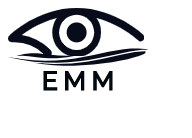Refraction eye exam and accommodation parameters
A refraction eye exam is a vital part of a comprehensive eye examination conducted by an optometrist to detect the presence of refractive errors such as myopia (nearsightedness), hyperopia (farsightedness), astigmatism, and presbyopia.

Importance in our daily life
Regular refraction eye exam is crucial for maintaining clear vision. It helps to detect vision changes and eye conditions early, enabling timely intervention and management. An accurate prescription and eye exercises (if needed) can significantly improve quality of life by enhancing visual clarity and comfort.
Initial assessment criteria
The exam begins with an initial assessment where the optometrist gathers information about medical history, vision concerns, prescription and contact lens history, screen time, and chief complain.
How to perfrom refraction eye exam
Next, the optometrist will conduct a visual acuity test using a Snellen chart. One will be asked to read letters from the chart at a distance monocularly, which helps determine how well you can see at various distances by both eyes seperately. The next step is pinhole test to get more clarity about the presence of refractive error.
Result from pinhole testing
If pinhole test shows decrease in vision then there is a problem in central vision. The reasons may inculde nuclear cataract, central corneal scarring, retinal and macular changes etc. One needs to be referred for further eye exam for dilated eye exam after completing the refraction eye exam.
The refraction can be perfromed either with trial box, retinoscopy and phoropter.
Prescribing final presciption
Based on the results of final examination (after performing post refraction tests and doing transposition if necessary), the optometrist will determine the final prescription.
Transposition
Transposition is the process of converting a lens prescription from one form to another. In optometry, prescriptions can be written in two forms: plus cylinder form and minus cylinder form. Both forms provide the same corrective power but represent the information differently. The purpose of transposition is to switch between these forms while maintaining the same corrective power for the patient.
Check accommodation parameters
The optometrist should also check the following accommodation parameters as they get disturbed by using excessive screen:
- Near point accommodation
- Amplitude of accommodation
- Accommodation facility
- Positive relative accommodation
- Negative relative accommodation
Near point accommodation
Near point accommodation is the closest distance at which the eye can focus on an object clearly.
The near point of accommodation varies with age. Here are the average values for different age groups:
- Children and Young Adults (10-30 years): Approximately 10 cm to 15 cm
- Middle-aged Adults (30-40 years): Around 15 cm to 20 cm
- Older Adults (40+ years): Gradually increases beyond 20 cm
If the near point of accommodation is not within the normal range for your age then here are some steps you can take to address this issue:
- Prescribing corrective lenses for near
- Eye exercises
- Doing near task under proper lighting
- Regular eye breaks
Amplitude of Accommodation
Amplitude of accommodation refers to the range over which the eye can adjust its focus from distant to near objects. It is a measure of the eye’s ability to change its lens shape, allowing for clear vision at various distances.
The amplitude of accommodation decreases with age. Here are the typical values for different age groups:
- Children (10 years old): Approximately 14 diopters
- Young Adults (20-30 years old): Around 10-12 diopters
- Middle-aged Adults (40 years old): About 4-5 diopters
- Older Adults (50+ years old): Less than 2 diopters
If the amplitude of accommodation is below the normal range for your age, then we can experience symptoms such as eye strain, headaches, and difficulty focusing on near objects. To address this issue, one should follow the same guideline as for near point accommodation.
Accommodation Facility
Accommodation facility refers to the eye’s ability to rapidly and accurately change focus between near and distant objects. It measures the speed and ease with which the eye can adjust its lens to maintain clear vision at different distances.
Accommodation facility is often measured in cycles per minute (cpm), where one cycle involves shifting focus from a near target to a distant target and back again. Normal values vary by age:
- Children and Young Adults (10-30 years): Approximately 10-12 cpm
- Middle-aged Adults (30-40 years): Around 8-10 cpm
- Older Adults (40+ years): Decreases with age, typically 4-8 cpm
The ability to quickly and accurately switch focus decreases with age, leading to slower accommodation responses and a reduced facility.
Accommodation facility is a vital function of our visual system, allowing us to shift focus quickly and accurately between different distances. Understanding its importance and normal values helps in recognizing potential issues early.
PRA and NRA
Positive Relative Accommodation (PRA) is the maximum amount of additional lens power (plus lenses) that can be added while still maintaining clear, single vision when focusing on a near object.
Negative Relative Accommodation (NRA) is the maximum amount of negative lens power (minus lenses) that can be added while still maintaining clear, single vision when focusing on a near object.
Positive Relative Accommodation (PRA)
- Normal Values: Approximately -2.00 to -3.00 diopters
- Significance: Higher values indicate better ability to accommodate for near vision, while lower values suggest accommodative weakness or fatigue.
Negative Relative Accommodation (NRA)
- Normal Values: Approximately +2.00 to +2.50 diopters
- Significance: Higher values indicate better ability to relax accommodation, while lower values may suggest difficulty in shifting focus from near to far.
A comprehensive refraction eye exam is crucial for ensuring clear vision and overall eye health. Beyond determining the appropriate corrective lenses, this exam provides valuable insights into various aspects of visual functions and the behavior of accommodation.
Founder of EyesMatterMost- an optometry student who loves talking about eyes. I tend to cover topics related to optometry, ophthalmology, eye health, eyecare, eye cosmetics and everything in between. This website is a medium to educate my readers everything related to eyes.

